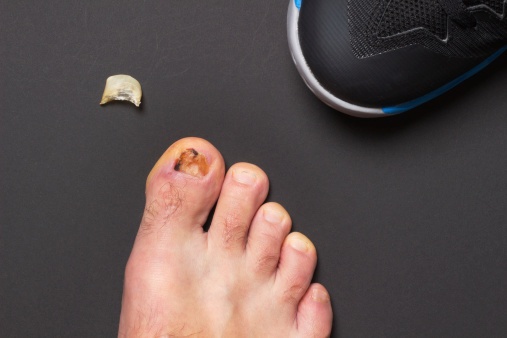
Losing a toenail can be a surprising and sometimes painful experience. While it might seem like a minor issue, it’s important to understand the potential causes behind nail loss and take appropriate steps to ensure proper healing and prevent complications. This article will delve into the reasons why you should consult a podiatrist before getting a pedicure if your toenail has fallen off. We’ll explore the various causes of toenail loss, the importance of professional medical advice, and the potential risks associated with pedicures when a nail is missing.
Toenail Loss Causes
Toenails can fall off due to a variety of factors, ranging from minor injuries to underlying medical conditions. Some common causes include:
- Trauma: A direct blow to the toe or stubbing it against something hard can cause damage to the nail bed, leading to separation and eventual loss of the toenail.
- Fungal Infections: Fungal infections are a frequent culprit behind toenail problems. They can weaken the nail structure, causing it to thicken, discolor, and eventually detach.
- Psoriasis: This autoimmune condition can affect the skin and nails, leading to thickened, pitted, or discolored toenails that may fall off.
- Diabetes: Individuals with diabetes are more susceptible to foot problems, including toenail loss. Poor circulation and nerve damage can compromise nail health.
Podiatrist Consultation
When a toenail falls off, it’s crucial to seek professional medical advice from a podiatrist. They can accurately diagnose the underlying cause of the nail loss and recommend the most appropriate treatment plan.
A podiatrist will examine your toe, assess the condition of the nail bed, and potentially order further tests if necessary. Based on their findings, they may prescribe medications to address any infections or underlying medical conditions contributing to the problem. They can also provide guidance on proper wound care and toenail regrowth.
Pedicure Risks
While pedicures can be a relaxing and enjoyable treat, getting one with a missing toenail presents certain risks.
- Infection: An open wound from a lost toenail is vulnerable to bacterial infection. Unsanitary pedicure tools or practices can introduce bacteria into the wound, leading to complications.
- Further Damage: The pressure and manipulation involved in a pedicure could further irritate the sensitive nail bed, delaying healing and potentially causing more pain.
Hygiene and Sanitation
If you choose to get a pedicure despite having a missing toenail, it’s essential to prioritize hygiene and sanitation.
Choose a Reputable Salon: Opt for salons with a strong reputation for cleanliness and adherence to sterilization protocols. Look for signs of proper disinfection practices, such as autoclaves used for sterilizing tools.
Communicate with Your Technician: Inform your technician about the missing toenail and any concerns you have. A good technician will take extra precautions to ensure your safety and well-being.
Infection Prevention
To minimize the risk of infection after a pedicure or while your toenail is healing, follow these preventive measures:
- Keep the Area Clean: Gently wash the affected area with soap and water twice daily. Pat it dry thoroughly.
- Apply Antibiotic Ointment: Your podiatrist may recommend applying an antibiotic ointment to the nail bed to prevent infection.
- Avoid Soaking: Limit soaking your feet in water, as this can soften the skin and increase the risk of bacterial growth.
Conclusion
Losing a toenail can be unsettling, but understanding the potential causes and taking appropriate steps is crucial for proper healing and preventing complications. Consulting a podiatrist before getting a pedicure when you have a missing nail is essential to ensure your safety and well-being. By prioritizing hygiene and sanitation, you can minimize the risk of infection and promote healthy toenail regrowth.
